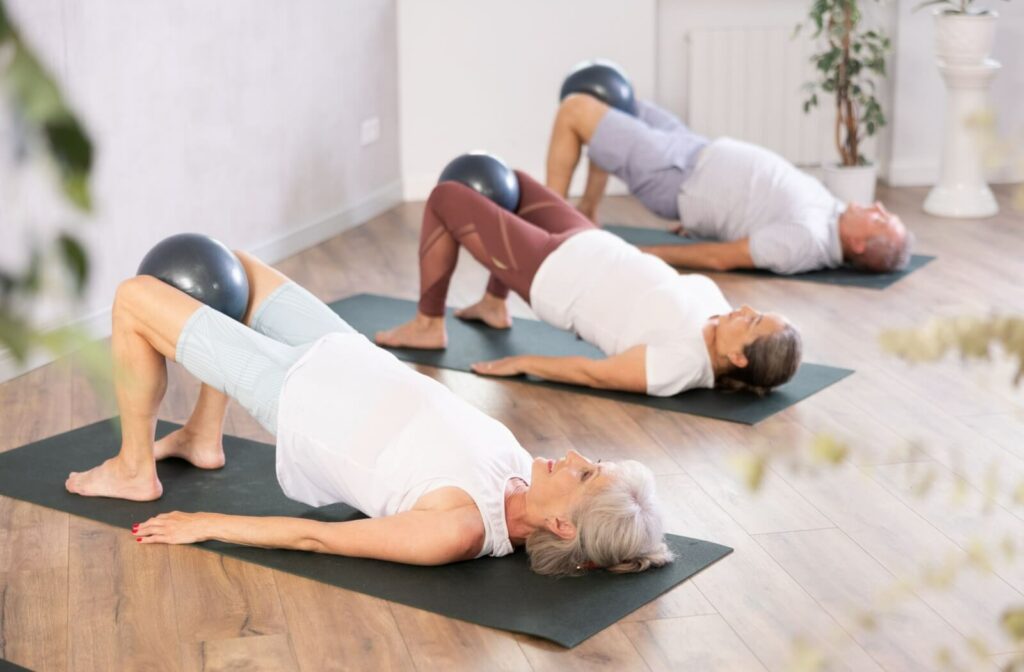Falls are the leading cause of injury among older adults. As we grow older, the physical and cognitive changes in our bodies can lead to an increased risk of falling.
Fortunately, there are proactive safety measures we can take to reduce the risk of falls for older adults:
- Creating a safe environment
- Using mobility aids
- Physical exercise
- Monitoring health and wellness
Why Aging Increases the Risk of Falls
Our risk of falling increases as we grow older due to the changes that come with aging. For instance:
- Our muscle mass decreases, leading to reduced strength and stability.
- Our sense of balance, which is connected to our inner ear, gradually gets worse.
- Our vision can also decline, making it harder to see potential hazards.
Many older adults experience chronic health conditions that impact both balance and mobility. Conditions like arthritis can limit joint flexibility, making it more difficult to respond quickly to a loss of balance, while conditions like diabetes can lead to nerve damage, causing numbness in feet that may affect balance.
Medications for these conditions can also have side effects like dizziness, drowsiness, or low blood pressure. When a person takes multiple medications, these side effects can be compounded, further increasing one’s risk of a fall.
Cognitive decline can also contribute to fall risk.
Conditions such as dementia can affect the brains’ judgment and reasoning centers, making it harder to recognize and avoid hazards. Parkinson’s disease may cause an individual to experience body tremors and muscle stiffness, making it more difficult for them to balance.
Older adults’ living environment can also significantly impact their risk of falling. Simple things like no rail support, loose rugs, cluttered floors, and poor lighting can become major fall risks.
Safety Measures to Help Prevent Falls
There are a variety of ways to help prevent a loved one from falling.
Home Modifications
One of the most practical ways to prevent falls is by making modifications to your loved one’s living environment.
Start by making sure that all living areas are well-lit. Use nightlights in hallways and bathrooms to make nighttime navigation safer. Remove tripping hazards like loose rugs or electrical cords.
Installing grab bars in the bathroom, particularly near the toilet and in the shower, can provide essential support. The same is true of stairs or difficult-to-navigate areas.
Clear floors by removing clutter and rearranging furniture to create a more open floor layout. Adding non-slip mats to the bathroom and kitchen floors can also help prevent slips.
For homes with stairs, make sure that handrails are sturdy and extend the full length of the staircase. Stair treads should be non-slip; consider marking the edges of steps with contrasting tape to improve visibility.
Mobility Aids
There may come a time when your loved one may require a mobility aid for extra support and stability while walking. This will allow them to maintain their independence. Working with your loved one’s primary healthcare provider can help determine the most suitable walking aid for your loved one’s needs.
Plus, wearing proper footwear can provide additional support. Ideally, shoes should have non-slip soles to provide good grip and support while walking. Avoid floppy slippers, very high heels, or shoes with slick soles.
Consider shoes that have velcro fastens instead of shoelaces to eliminate the risk of tripping over untied laces.

Physical Exercise
Physical exercise helps to maintain cardiovascular health, strengthen muscles, and improve balance. Strength training can help build and maintain muscle mass, which reduces as we grow older. Strength training can also improve balance.
Older adults should engage in strength training at least twice a week. Some activities that can be incorporated into a physical exercise routine include:
- Weight Lifting: Traditional weight lifting like simple leg lifts, squats, and arm training can strengthen legs, arms, hips, and overall core to improve balance and stability for everyday mobility.
- Resistance Bands: Using resistance bands during exercises can increase muscle resistance and flexibility.
- Barre or Pilates: These lightweight activities still provide resistance to tone muscles and improve your core strength, mobility, and stability.
Exercises that focus on balance help with fall prevention. Older adults should engage in activities that enhance their balance at least once a week:
- Tai Chi: This gentle form of martial arts improves balance and coordination.
- Yoga: Yoga can be practiced at several intensity levels to promote muscle strength and balance.
Monitor Physical Health
Staying on top of your loved one’s physical health evaluations is a key component in caregiving. Routine check-ups with your loved one’s primary care physician (PCP) and optometrist can detect any potential issues that can increase the risk of falls.
Consult your loved one’s PCP about conducting a bone density test. As we age, our bones become more susceptible to fractures in the event of a fall. A bone density test can assess bone strength and suggest measures to enhance it.
Plus, visiting your loved one’s optometrist for annual eye exams can help confirm their ocular health and vision. As we grow older, we become more susceptible to developing eye conditions, which can impact the quality of our vision, increasing the risk of falls.
Promote Healthy Living
In addition to encouraging an active lifestyle and regular health assessments, incorporating positive wellness changes in your loved one’s diet can also help.
Eating a balanced diet of whole foods rich in calcium and vitamin D helps strengthen bones, while protein-rich foods are great for building and maintaining muscle mass.
Staying hydrated can positively impact balance, prevent dizziness, and improve overall well-being. Adults are encouraged to drink at least 4 to 6 cups of water a day!
Connect With Our Team
Preventing the risk of falls in older adults takes a multifaceted approach. Implementing these safety measures into your loved one’s life can help.
Senior living communities implement these safety measures to provide a safe and comfortable environment. Connect with our team at The Legacy at Cimarron to learn more about the benefits of senior living.
